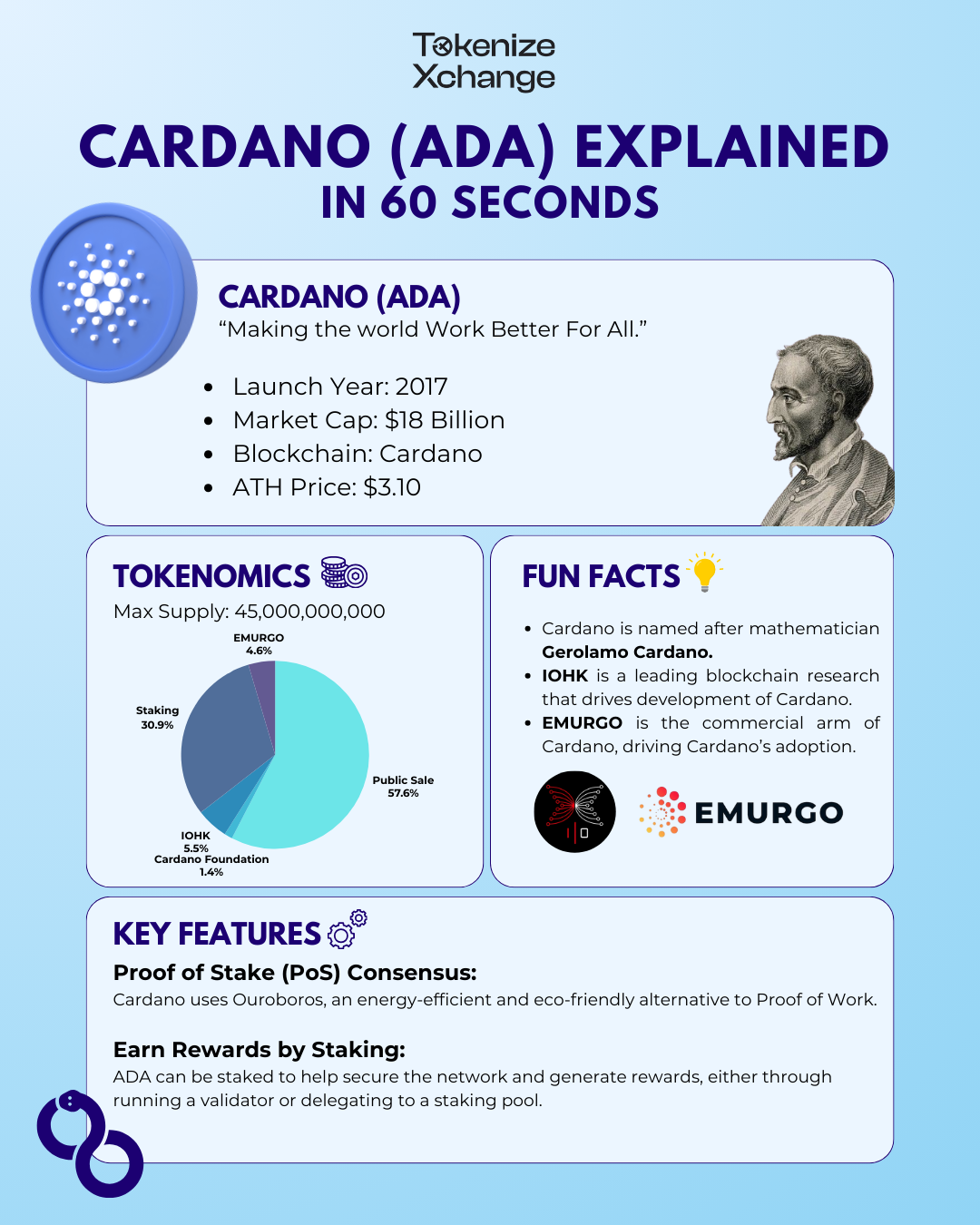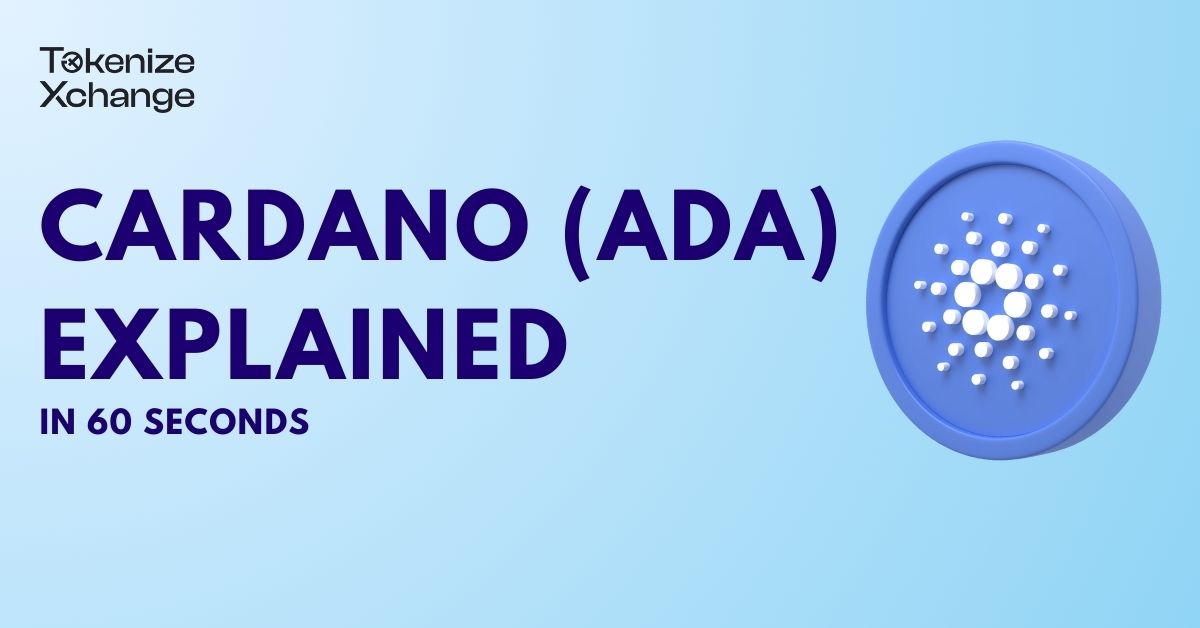
Introduction to Cardano
Cardano is a third-generation blockchain platform designed to address the limitations of older networks like Bitcoin and Ethereum. Built on a foundation of peer-reviewed academic research, Cardano aims to offer a more sustainable, scalable, and interoperable blockchain ecosystem. Launched in 2017, Cardano has steadily grown into one of the top cryptocurrencies by market capitalization, with its native token, ADA, sitting at the heart of the network.
Key Stats at a Glance
- Launch Year: 2017
- Market Cap: $18 Billion
- All-Time High (ATH) Price: $3.10
- Blockchain: Cardano
- Token Ticker: ADA
Key Features
One of Cardano’s biggest innovations is its Proof-of-Stake (PoS) consensus mechanism called Ouroboros. It’s the first PoS protocol based on peer-reviewed research and offers a highly energy-efficient and secure alternative to traditional Proof-of-Work systems. Ouroboros not only reduces energy consumption but also enables ADA holders to stake their tokens to help secure the network and earn rewards.
Tokenomics and Distribution
Cardano’s ADA has a maximum supply of 45 billion tokens, carefully distributed to ensure long-term sustainability and development:
- Public Sale: 57.6%
- Staking Rewards: 30.9%
- IOHK: 5.5%
- EMURGO: 4.6%
- Cardano Foundation: 1.4%
Conclusion
Cardano is more than just another cryptocurrency — it’s a full-fledged blockchain ecosystem built on science, sustainability, and smart innovation. From its environmentally-friendly PoS consensus to its token-native architecture, Cardano offers a unique platform for users, developers, and businesses. With a strong foundation and ongoing upgrades, ADA continues to play a significant role in shaping the future of blockchain technology.
